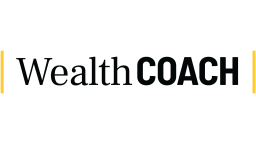What do I need to do before the end of the year, to be ready for tax-time and whatever next year may bring?
Even if performing a check-up on your investments isn’t typically on your list of things to do before the end of the year, this is one year you don’t want to skip.
Markets have been unusually volatile and investors may be leery about the year ahead. The 2018 tax year will also mark the first year in which the tax reforms took effect. That means there are several variables and new factors to consider as you close out the year.
Here are some important details to check in on before the end of the year.
Reallocate and rebalance
With the market on a tear for the past nine years, many investors’ portfolios have become stock heavy and may no longer reflect big picture goals, says Samuel Wieser, CEO and investment advisor for Northman Financial.

Asset allocation is a significant driver of portfolio performance, he says, and periodic rebalancing is a critical part of ensuring you are sticking with your investment strategy.
“If your portfolio has a bloated stock allocation, you are likely exposing yourself to excess risk,” Wieser says. “Many experts believe we may see a significant downturn in the economy and stock market in the coming months after the longest bull market in history. If you haven’t rebalanced lately, now would be a great time.”
A common mistake when rebalancing, he says, is to only focus on your IRA or brokerage accounts. Make sure you also look at your 401(k) or any other employer sponsored plan. Usually, the allocations in your account are completely up to you even though there may be a third party investment manager looking after the plan as a whole.
As a guideline for asset allocation, advisers recommend holding equities in the amount of 100 minus your age. So a typical 40 year old will hold 60% in equities. But consider that guideline alongside the fact that Americans are living longer and earning fewer rewards from low-risk investments. Your risk tolerance may be higher.
Harvest your losses to lower your tax bill
Many investments have lost ground over the past several months, so there may be more opportunities than usual to sell investments at a loss and reinvest them in similar (but not identical) investments, says Bill Nelson, founder of Pacesetter Planning.
This process is called “tax loss harvesting.” Your capital losses can offset other investment income you’ve received this year to reduce the taxes you owe come April. If you have more capital losses than gains, up to $3,000 can be deducted against ordinary income.
Harvesting losses also allows investors to reduce their exposure to individual stocks they’ve seen a gain on in the past five to ten years (like Apple, Netflix, Amazon), without taking a big hit from capital gains taxes on those positions.
“You should not let the tax tail wag the dog, but you should consider that capital losses can offset taxable capital gains from investments and reduce your tax bill,” says Lorri Winkcompleck, president of Gap Financial.
Consider Roth conversions
Now may be a great time to think about converting some of your pretax investments, such as traditional 401(k)s or IRAs, into a Roth.
For the opportunity to access this tax-free income later on in life, you will need to pay taxes on it now. The tax reforms have temporarily reduced the tax brackets, making it a more favorable time for a Roth 401(k) or IRA conversion. Come 2025, the brackets are set to revert to their previous levels.
Thanks to the tax reforms, married couples with joint income between $165,000 and $315,000 are now in the 24% marginal tax bracket, says Bradley Nelson, an investment adviser at Lyon Park Advisors. After 2025, they would return to the 28% to 33% marginal tax brackets. (Although the current tax brackets could also be extended.)
Couples who anticipate having similar income after retirement, may want to convert enough 401(k) and traditional IRA assets to Roth accounts to reach the $315,000 bracket ceiling this year. That way, they pay the federal tax now at the 24% rate rather than pay the federal tax later at a 28%-33% rate during retirement.
Manage current and future income
This is the time to manage what goes into and what comes out of your retirement funds.
“Make extra contributions to your retirement accounts,” says Bill Nelson. You can contribute up to $18,500 this year in your 401(k), with an extra $6,000 catch up contribution if you’re over 50.
“If you haven’t maxed out this account, make a one-time contribution before December 31. Not only will you boost your retirement savings, but you’ll reduce your taxes in April as well.”
Investors with beneficiary IRAs or inherited IRAs need to complete the required minimum distributions (RMDs). These apply regardless of the account holder’s age.
With traditional IRAs, 401(k)s and other retirement plans, RMDs are not required until an individual reaches age 70 ½, says Winkcompleck. The required payout is a percentage of total assets prior to December 31. To avoid a possible tax penalty, RMDs need to be taken within the calendar year.
Don’t skip the simple stuff
It may be basic, but don’t overlook making a list of the tax forms you need. It will help you avoid confusion later.
Some examples of what you might need: W2s (for traditional jobs), 1099s (for independent contractor work), 1098-E (if you are repaying student loans, you’ll need this to claim the student loan interest deduction), 1099-INT (for savings account interest, and now that rates on high-yield savings accounts are over 2%, more people will use these this year than in the past), 1099-DIV (investment income), and form 1095 (to verify health insurance coverage).
“Remember that the repeal of the individual mandate doesn’t kick in until January 1, 2019,” says Bill Nelson, “so you still need to verify your health insurance this year to avoid the tax penalty.”





















